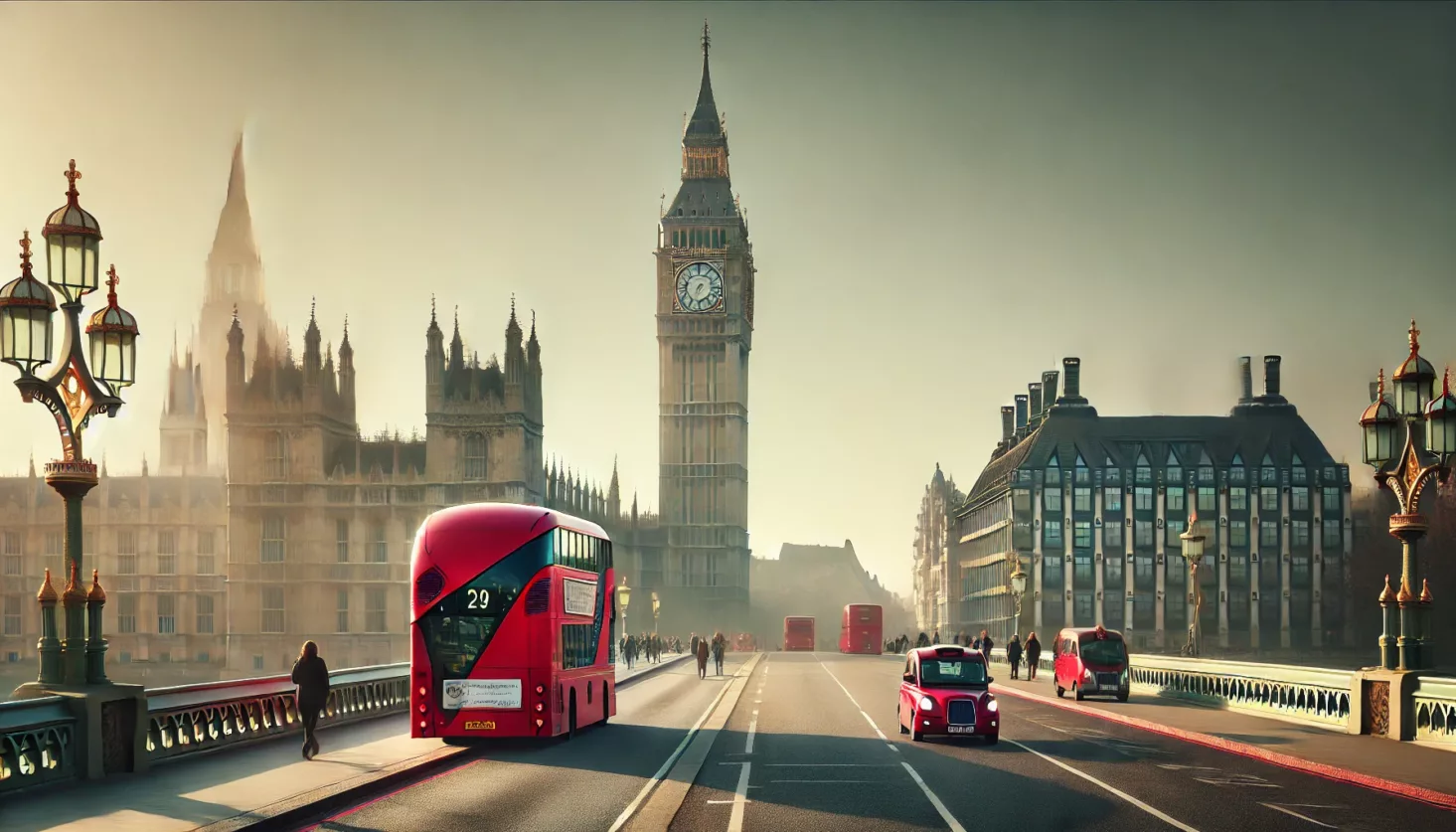
The Best London Attractions for History Buffs
London, the capital city of the United Kingdom, is a treasure trove of history, boasting an array of attractions that cater to the interests of avid history buffs. From iconic landmarks to hidden gems, London offers a diverse range of experiences that provide insight into the rich tapestry of its past.
Whether you’re exploring the grandeur of its palaces, delving into the depths of its museums, or simply strolling through its green spaces, London attractions for history buffs offers a captivating journey through time for those eager to uncover its rich historical tapestry.
One of the highlights of exploring London’s historical heritage is visiting its renowned historic sites. From the majestic Tower of London, with its centuries-old history of royal intrigue and imprisonment, to the imposing Westminster Abbey, where monarchs have been crowned and laid to rest for over a thousand years, these landmarks offer a captivating glimpse into the city’s storied past.
In addition to its iconic landmarks, London is also home to a vibrant arts scene that celebrates its cultural heritage through music, theater, and visual arts. Whether it’s exploring the Shakespearean history of the Globe Theatre or admiring the works of renowned artists at the Tate Modern, visitors can immerse themselves in the artistic legacy of London’s past while also experiencing its dynamic contemporary culture.
For history buffs looking for a more immersive experience, London offers a variety of museums dedicated to preserving and showcasing its rich history. From the British Museum, home to an extensive collection of artifacts spanning thousands of years and cultures, to the Imperial War Museum, which chronicles the impact of conflict on society, these institutions offer unparalleled opportunities for learning and exploration.
Beyond its bustling streets and towering skyscrapers, London also boasts an abundance of parks and green spaces that provide a tranquil retreat from the urban hustle and bustle. Whether it’s a leisurely stroll through Hyde Park, with its picturesque Serpentine lake and historical monuments, or a visit to the sprawling grounds of Greenwich Park, where history and nature intertwine, London’s parks offer a peaceful oasis in the heart of the city.
With its wealth of historic sites, cultural landmarks, and immersive museums, London is a paradise for history enthusiasts seeking to delve into the fascinating stories of the past.
Tower of London
The Tower of London is a historic landmark. Here are some key facts about it:
1. The Tower of London has a rich history dating back nearly a thousand years. It was originally built as a royal palace and later served as a prison, treasury, and menagerie.
2. Architecture: The Tower of London is an impressive fortress with towers, walls, and a moat. The oldest and most iconic structure is the White Tower.
3. Yeoman Warders: The Tower of London is guarded by Yeoman Warders, commonly known as Beefeaters. These guards provide tours and share fascinating stories about the Tower’s history.
4. Crown Jewels: The Jewel House at the Tower of London is home to the Crown Jewels. Visitors can admire treasures like the Crown, Sceptre, and Sovereign’s Orb.
5. Ravens: Legend has it that the Tower of London will fall if the six resident ravens ever leave. Visitors can see these birds and learn more about this superstition.
6. Tours: The Tower of London offers guided tours that provide insights into its history and significance. Visitors can explore the towers, learn about prisoners, and immerse themselves in London’s past.
Pro-tip: To make the most of your visit to the Tower of London, arrive early to avoid crowds and have enough time to fully explore this fascinating historical site.
British Museum
The British Museum in London is a well-known attraction for history enthusiasts.
It contains more than 8 million historical objects from around the world, including important pieces from ancient civilizations.
These include the Rosetta Stone, which played a crucial role in deciphering Egyptian hieroglyphs, and the Elgin Marbles, a collection of classical Greek sculptures from the Parthenon in Athens.
Visitors have the opportunity to explore various galleries dedicated to different historical periods and regions, gaining unique insights into the rich history and cultural heritage of civilizations that have spanned thousands of years.
The museum’s Egyptian collection showcases mummies, ancient tomb objects, and exquisite jewellery, offering a fascinating glimpse into ancient Egyptian civilization and their beliefs about the afterlife.
The museum proudly displays its extensive collection of ancient Roman and Greek objects, including intricately carved statues and insights into the mythology and philosophy of these classical civilizations.
Admission to the British Museum is free, and it offers daily guided tours and informative exhibitions.
Whether you have a passion for history or simply wish to explore diverse cultural heritage, the British Museum guarantees to captivate and educate visitors of all ages.
Westminster Abbey
Westminster Abbey is a historic site in London with impressive Gothic architecture. It has a thousand-year history. Notable features of Westminster Abbey include its magnificent towers, intricate details, and beautiful stained glass windows.
The abbey is where English and British monarchs have been crowned since 1066, including Queen Elizabeth II in 1953. Many famous people, such as kings, queens, poets, scientists, and politicians, are buried at Westminster Abbey, including Queen Elizabeth I, Isaac Newton, Charles Darwin, and Geoffrey Chaucer.
The Poets’ Corner, located in the South Transept, is a designated area for esteemed British writers and poets, appealing to literature enthusiasts.
By visiting Westminster Abbey, you have the opportunity to immerse yourself in centuries of history and appreciate the splendor of this remarkable architectural masterpiece. You may want to consider taking a guided tour to truly comprehend the significance of the abbey and learn fascinating insights and anecdotes about it.
Churchill War Rooms
The Churchill War Rooms in London are an essential visit for history enthusiasts. This one-of-a-kind attraction takes visitors back in time to the underground bunker where Winston Churchill and his government carried out operations during World War II.
Within the Churchill War Rooms, you have the chance to explore the actual command centres used by Churchill and his team. Interactive exhibits and displays provide insight into their lives and work during the war.
A significant feature of the Churchill War Rooms is the Map Room. Here, you can see the original maps and charts used to track the progress of the war, giving you a first-hand view of the planning and strategy involved in achieving victory.
The Churchill Museum is another notable aspect, displaying the life and legacy of Winston Churchill. It offers a comprehensive understanding of his impact on British history.
By visiting the Churchill War Rooms, you can follow in the footsteps of Churchill and his government, experiencing the tense atmosphere of wartime London. It is an educational and thought-provoking experience that enhances appreciation for the sacrifices made during World War II.
If you are a history enthusiast visiting London, do not miss the opportunity to explore the Churchill War Rooms. It is a chance to immerse yourself in the history of one of Britain’s greatest leaders and gain a deeper understanding of the events that shaped the world.
St. Paul’s Cathedral
St. Paul’s Cathedral is an esteemed landmark in London. This distinguished cathedral, designed by Sir Christopher Wren, is one of the most recognisable symbols of the city.
- Architectural marvel: St. Paul’s Cathedral is a masterpiece of architecture, featuring an impressive dome. The dome stands at a height of 365 feet, making it one of the largest in the world.
- Rich history: The cathedral endured the Great Fire of London in 1666 and played a crucial role during World War II as a symbol of resilience and hope.
- Religious significance: St. Paul’s Cathedral serves as the seat of the Bishop of London and has been a place of worship for centuries. It hosts regular services and provides a serene space for contemplation and prayer.
- Breathtaking views: The cathedral’s dome offers picturesque views of the city. Visitors can ascend the stairs to the Golden Gallery, situated 280 feet above the ground, and admire stunning panoramas of London’s skyline.
During the construction of St. Paul’s Cathedral, the renowned Whispering Gallery was constructed. It acquired its name due to its unique acoustic properties that enable a whisper to be clearly heard on the opposite side of the dome, even from a distance of nearly 100 feet. This phenomenon has captivated visitors for centuries and remains a popular highlight of the cathedral.
Buckingham Palace
Buckingham Palace, located in London, is a representation of British history and monarchy. It is the official residence of Her Majesty Queen Elizabeth II and holds great historical importance. The palace was initially built in the 18th century as a private home for the Duke of Buckingham, but it was acquired by King George III in 1761 and has since functioned as the royal residence.
When visiting Buckingham Palace, individuals have the opportunity to observe the Changing of the Guard ceremony, a tradition that has been occurring since 1660. This ceremony signifies the formal transfer of responsibilities between two groups of guards and is a popular event for history enthusiasts.
During the summer season, the State Rooms of the palace are open to the public. These rooms showcase magnificent artwork, furnishings, and designs, providing visitors with a glimpse into the lives of the British monarchy.
One fascinating historical incident associated with Buckingham Palace is the bombing it endured during World War II. On September 13, 1940, the palace was targeted by the Germans, resulting in significant damage. It was promptly reconstructed and restored, becoming a symbol of resilience during wartime.
Buckingham Palace embodies the rich heritage and grandeur of the British monarchy. It remains an important landmark for history enthusiasts, exhibiting architectural marvels, royal traditions, and intriguing stories from the past.
Hampton Court Palace
Hampton Court Palace is a historic attraction in Richmond upon Thames, London. The palace showcases Tudor and Baroque architecture. It is synonymous with King Henry VIII, who transformed it into a lavish royal residence in the 16th century.
The palace features extensive gardens, including the famous Hampton Court Palace Gardens. These landscapes provide a tranquil escape from the city.
Visitors can explore the Tudor Kitchens, where elaborate feasts were prepared. They can learn about the culinary traditions of the time and marvel at the impressive cooking techniques.
Hampton Court Palace is known for its haunted history, with stories of spirits including Henry VIII’s wives and other historical figures.
One noteworthy event in the palace’s history is the “Hampton Court Conference” of 1604, where King James I of England discussed religious matters and the translation of the Bible.
This led to the creation of the King James Version and had a significant impact on England’s religious and cultural landscape. The palace symbolises religious tolerance and intellectual pursuits.
The Globe Theatre
The Globe Theatre in London is a well-known historical landmark. It was the original location where many of William Shakespeare’s plays were performed during the Elizabethan era.
First constructed in 1599, the Globe Theatre was reconstructed in 1997 to replicate its original design. Today, visitors can experience an authentic Elizabethan playhouse and enjoy Shakespearean plays just as they were centuries ago.
The theatre offers the opportunity to fully immerse oneself in Shakespeare’s era. The performances showcase his brilliant storytelling and theatrical talent, establishing him as one of the greatest playwrights in history.
Visitors can also explore the exhibition within the theatre to gain a deeper understanding of its fascinating history. From its initial construction to the devastation caused by a fire and subsequent rebuilding, it stands as a testament to the lasting legacy of Shakespeare’s works.
The Globe Theatre was one of London’s most popular entertainment venues. It could accommodate up to 3,000 spectators, both wealthy and humble, who would gather to watch plays. In 1613, the theatre was destroyed by fire during a performance of Shakespeare’s play “Henry VIII.” It was reconstructed the following year and continued to host performances until its closure in 1642.
A visit to the Globe Theatre offers the chance to fully immerse oneself in Shakespeare’s world and experience the same excitement and wonder that audiences felt centuries ago. It is a must-visit for history enthusiasts and theatre lovers alike.
Imperial War Museum
The Imperial War Museum in London is a destination for history enthusiasts. This museum showcases the impact of war on people’s lives and the history of conflict around the world.
- Extensive collection: The museum houses a large collection of artifacts, documents, and photographs from various wars and conflicts. Visitors can explore personal stories and historical accounts that bring these events to life.
- Interactive exhibits: The museum offers interactive exhibits that allow visitors to engage with history. You can step into the shoes of soldiers on the front lines or experience the Blitz firsthand.
- Historic warships and aircraft: The museum has a collection of warships and aircraft, including iconic vessels like HMS Belfast and famous planes like the Spitfire.
- Thought-provoking displays: The museum aims to stimulate thought and encourage dialogue about the causes and consequences of war. Visitors can gain a deeper understanding of the human impact and reflect on the lessons of history.
The National Maritime Museum
The National Maritime Museum in Greenwich, London is one of the largest museums dedicated to the maritime history of Britain. It houses a vast collection of artefacts, documents, and artworks, providing a comprehensive overview of Britain’s seafaring past.
Visitors can explore exhibits on naval warfare, exploration, trade, and shipbuilding. The Nelson, Navy, Nation gallery is a particular highlight, focusing on Admiral Lord Nelson and his achievements in British naval history.
The museum offers interactive displays and hands-on activities that engage visitors of all ages. It provides a unique opportunity to learn about how the maritime world influenced Britain’s development and global influence.
To make the most of your visit, check the museum’s website for special exhibitions or events. Consider joining a guided tour or attending a talk or workshop to enhance your understanding of the exhibits.
Kensington Palace
Kensington Palace is a historical royal residence located in Kensington, London. It has been the residence of the British royal family since the 17th century and currently serves as the official residence of the Duke and Duchess of Cambridge, Prince William, and Catherine Middleton.
Kensington Palace is famous for its extensive history and impressive architecture. Visitors have the opportunity to explore the lives of the monarchy who lived there through exhibitions such as the King’s State Apartments, the Queen’s State Apartments, and the Victoria Revealed exhibition, which offers insight into the life and reign of Queen Victoria.
Visitors can admire the palace’s beautiful gardens, including the tranquil Sunken Garden with its vibrant flower displays. For history enthusiasts, a visit to Kensington Palace is essential as it provides a glimpse into the lives of the royal family and British history.
Fun Fact: Kensington Palace is not only a historical site but also a fully functional royal residence. It is still used by members of the royal family for private events and as their main residence in London.
The British Library
The British Library is a significant cultural institution in the United Kingdom. Located in London, it serves as the residence for a wide range of books, manuscripts, and historical documents.
The library contains over 170 million items, making it one of the largest libraries globally. Its collection includes books from various time periods, languages, and subjects, serving as a valuable resource for enthusiasts of history.
The library features maps, music recordings, stamps, and websites. Of particular note, visitors have the opportunity to witness the Magna Carta, which symbolizes English law and freedom since 1215. The library also showcases original manuscripts authored by renowned writers like Shakespeare and Dickens.
Visitors can explore exhibitions, attend lectures and events, and access a vast wealth of knowledge and resources. The British Library holds great importance for students, researchers, and individuals interested in history. With its extensive collection and dedication to preserving and sharing knowledge, it remains a pivotal institution for history and culture enthusiasts.
Windsor Castle
Windsor Castle, in Berkshire, England, is the oldest inhabited castle in the world. It has been a royal residence for over 900 years and remains a working palace today. This historic landmark allows visitors to explore the State Apartments, which are still used for ceremonial events.
The castle also houses one of the finest art collections in the world, featuring works by artists such as Rembrandt and Leonardo da Vinci.
The Changing of the Guard ceremony at Windsor Castle is a must-see. This traditional ritual showcases the precision and discipline of the Queen’s Guard and is held within the castle grounds. Witnessing this ceremony immerses you in the traditions and pageantry of the British monarchy.
Do not miss St. George’s Chapel, an architectural masterpiece within the castle grounds. This chapel has hosted royal weddings and is the final resting place for many monarchs, including King Henry VIII. The stunning Gothic architecture and intricate stained glass windows demonstrate the skill of medieval craftsmen.
Windsor Castle provides a journey through centuries of history and is a must-visit for history enthusiasts and anyone interested in the grandeur of the British royal family.





